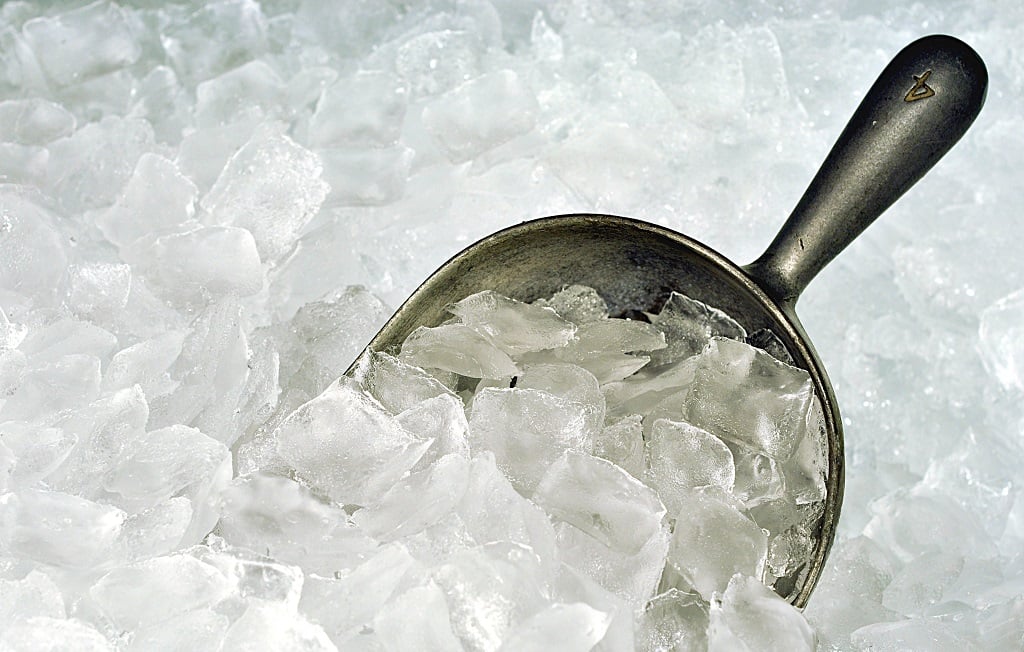The common misconception is that bacteria can not thrive in extremely low temperatures. However, studies show how some E. coli and Salmonella strains can survive in freezing temperatures. But can consuming contaminated ice make you sick?
Certain bacteria can survive in extremely cold conditions, and the ice of neglected ice machines has become a breeding ground for these microorganisms. Ideally, they do not grow and proliferate on surfaces like this, and it is still unsafe to consume ice that has been exposed.
Can Bacteria Survive in Ice?
Simply put, bacteria capable of causing great harm to humans can survive in ice cubes. Many people believe that ice is too cold to harbor microorganisms.
That, unfortunately, is not the case. Bacteria like Listeria monocytogenes can even thrive in ice cream, as evidenced by an ongoing incident involving blue bell ice cream in the United States.
Consuming unclean ice may result in unwelcome cases of cholera, Salmonella, E.coli, Norovirus, and other diseases caused by bacteria.
Because of the possibility of bacteria, ice machines must be cleaned frequently. (Source: Hygiene and Food Safety)
When Should You Clean Your Ice Machine?
Businesses may begin with good intentions, but cleaning and maintenance can quickly fall by the wayside when things get hectic or at the end of long service. The frequency with which a commercial ice maker should be cleaned varies. This depends on the frequency of use and the water condition in each case.
Manufacturers do recommend cleaning quarterly. However, this is what is called the deep clean. Employees should clean the exposed interior once a week when the machine is empty.
Remember that it’s not just about fighting germs but also about removing any dangerous slime or mold that forms naturally when air is sucked into the device during operation. Before cleaning, never wait for negative indicators like soft, misshapen, hazy cubes, or a strong odor. If any of these occur, likely, cleaning is already past due. Maintain a firm timetable to avoid becoming reactive rather than proactive. (Source: Hygiene and Food Safety)
Does the Same Concept Apply to Ice Cream Scoops?
Another essential consideration is preventing contamination from outside the machine. An appropriately dedicated ice scoop should be stored in a mild sanitizer, at the very least, away from potential cross-contamination. This means that the scoop should never be left on the ice.
Hands should never come into touch with ice, foul ones. There is always a chance that glass will be broken into the machine, and because of the translucency, you will never be able to see it. Plates, bowls, and glasses should never be used to scoop ice. (Source: Hygiene and Food Safety)
How to Clean Ice Machines?
Ice machines must be cleaned and sanitized regularly to prevent biofilms from growing on the outside or inside of the machine. These biofilms can serve as an organic surface on which some illnesses might thrive.
While we can give professional ice machine cleaning, ice machine owners should also incorporate light disinfection of high-use areas.
The exterior of the ice machine must be cleaned because it is exposed to the elements and the user’s hands. Users who touch the machine’s outside can readily introduce pollutants to your ice supply when serving.
The internal bin should also be cleaned and sanitized at least once weekly. Mold and slime thrive in dark, wet environments. Chlorine bleach is a common and inexpensive technique to disinfect and sanitize your ice machine. The EPA lists other certified ice machine cleaners for destroying germs and viruses. (Source: Hygiene and Food Safety)
